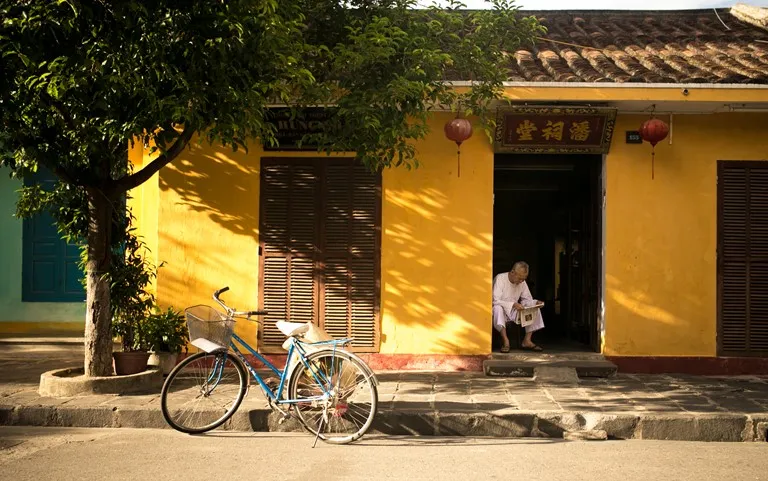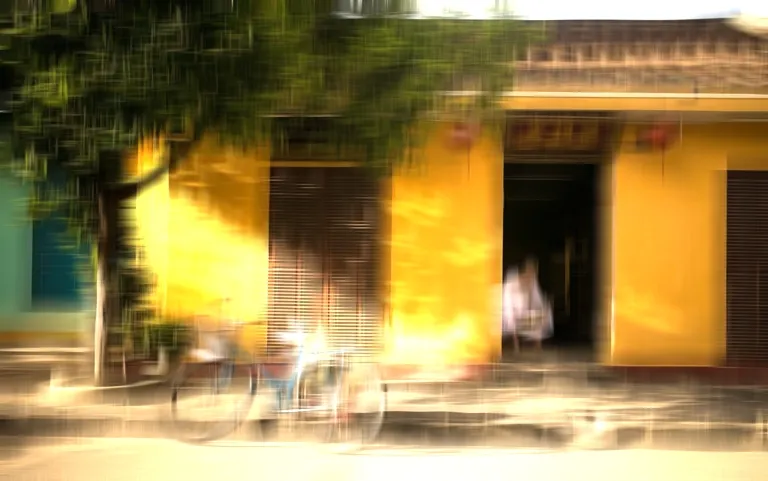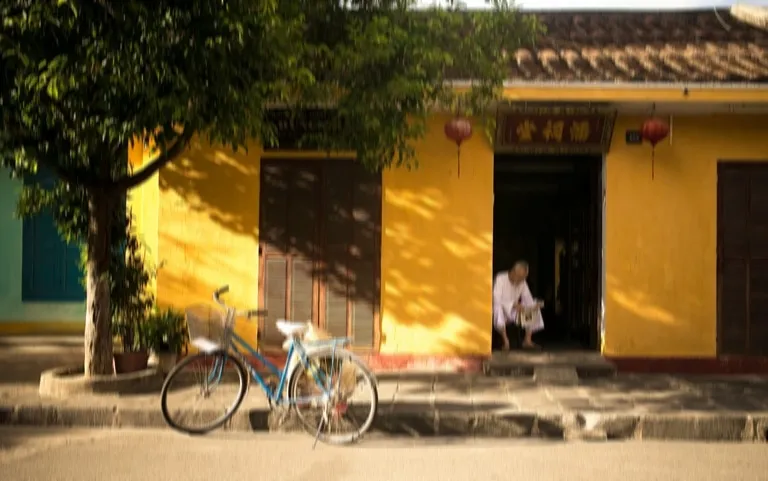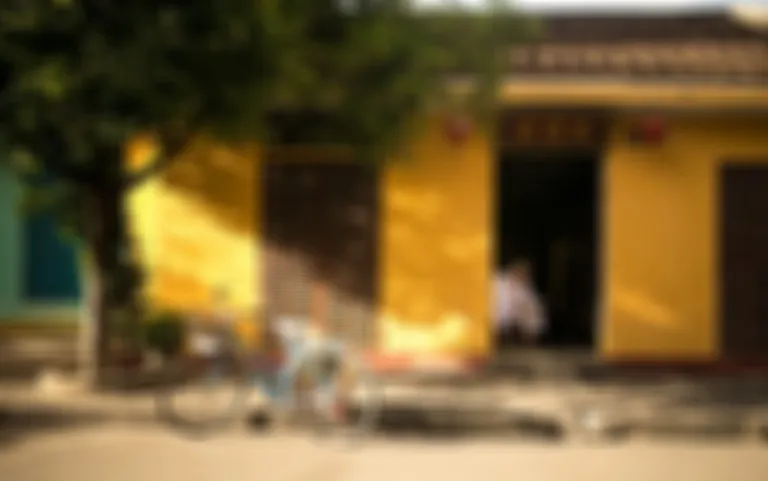我正在尝试实现一个高性能的高斯模糊,利用了高斯核是可分离的事实,即可以将2D卷积表示为两个1D卷积的组合。
我使用以下代码能够生成我认为是正确的两个核。
/// <summary>
/// Create a 1 dimensional Gaussian kernel using the Gaussian G(x) function
/// </summary>
/// <param name="horizontal">Whether to calculate a horizontal kernel.</param>
/// <returns>The <see cref="T:float[,]"/></returns>
private float[,] CreateGaussianKernel(bool horizontal)
{
int size = this.kernelSize;
float[,] kernel = horizontal ? new float[1, size] : new float[size, 1];
float sum = 0.0f;
float midpoint = (size - 1) / 2f;
for (int i = 0; i < size; i++)
{
float x = i - midpoint;
float gx = this.Gaussian(x);
sum += gx;
if (horizontal)
{
kernel[0, i] = gx;
}
else
{
kernel[i, 0] = gx;
}
}
// Normalise kernel so that the sum of all weights equals 1
if (horizontal)
{
for (int i = 0; i < size; i++)
{
kernel[0, i] = kernel[0, i] / sum;
}
}
else
{
for (int i = 0; i < size; i++)
{
kernel[i, 0] = kernel[i, 0] / sum;
}
}
return kernel;
}
/// <summary>
/// Implementation of 1D Gaussian G(x) function
/// </summary>
/// <param name="x">The x provided to G(x)</param>
/// <returns>The Gaussian G(x)</returns>
private float Gaussian(float x)
{
const float Numerator = 1.0f;
float deviation = this.sigma;
float denominator = (float)(Math.Sqrt(2 * Math.PI) * deviation);
float exponentNumerator = -x * x;
float exponentDenominator = (float)(2 * Math.Pow(deviation, 2));
float left = Numerator / denominator;
float right = (float)Math.Exp(exponentNumerator / exponentDenominator);
return left * right;
}
核大小是根据 sigma 计算的,具体如下。
this.kernelSize = ((int)Math.Ceiling(sigma) * 2) + 1;
this.sigma = sigma;
给定sigma为3,这会导致每个方向如下。
0.106288522,
0.140321344,
0.165770069,
0.175240144,
0.165770069,
0.140321344,
0.106288522
这些加起来完全等于1,所以我走在正确的道路上。
将卷积核应用于图像正在变得困难,因为出现了一些问题,尽管我不确定是什么问题。
我正在使用以下代码运行一个双通道算法,当卷积内核在两个方向上都是偶数时,如Sobel或Prewitt用于边缘检测时,它可以完美地工作。
protected override void Apply(ImageBase target,
ImageBase source,
Rectangle targetRectangle,
Rectangle sourceRectangle,
int startY,
int endY)
{
float[,] kernelX = this.KernelX;
float[,] kernelY = this.KernelY;
int kernelYHeight = kernelY.GetLength(0);
int kernelYWidth = kernelY.GetLength(1);
int kernelXHeight = kernelX.GetLength(0);
int kernelXWidth = kernelX.GetLength(1);
int radiusY = kernelYHeight >> 1;
int radiusX = kernelXWidth >> 1;
int sourceY = sourceRectangle.Y;
int sourceBottom = sourceRectangle.Bottom;
int startX = sourceRectangle.X;
int endX = sourceRectangle.Right;
int maxY = sourceBottom - 1;
int maxX = endX - 1;
Parallel.For(
startY,
endY,
y =>
{
if (y >= sourceY && y < sourceBottom)
{
for (int x = startX; x < endX; x++)
{
float rX = 0;
float gX = 0;
float bX = 0;
float rY = 0;
float gY = 0;
float bY = 0;
// Apply each matrix multiplier to the
// color components for each pixel.
for (int fy = 0; fy < kernelYHeight; fy++)
{
int fyr = fy - radiusY;
int offsetY = y + fyr;
offsetY = offsetY.Clamp(0, maxY);
for (int fx = 0; fx < kernelXWidth; fx++)
{
int fxr = fx - radiusX;
int offsetX = x + fxr;
offsetX = offsetX.Clamp(0, maxX);
Color currentColor = source[offsetX, offsetY];
float r = currentColor.R;
float g = currentColor.G;
float b = currentColor.B;
if (fy < kernelXHeight)
{
rX += kernelX[fy, fx] * r;
gX += kernelX[fy, fx] * g;
bX += kernelX[fy, fx] * b;
}
if (fx < kernelYWidth)
{
rY += kernelY[fy, fx] * r;
gY += kernelY[fy, fx] * g;
bY += kernelY[fy, fx] * b;
}
}
}
float red = (float)Math.Sqrt((rX * rX) + (rY * rY));
float green = (float)Math.Sqrt((gX * gX) + (gY * gY));
float blue = (float)Math.Sqrt((bX * bX) + (bY * bY));
Color targetColor = target[x, y];
target[x, y] = new Color(red,
green, blue, targetColor.A);
}
}
});
}
这是输入图像:
这是一张尝试使用3个标准差模糊的图片。
正如您所看到的,有些地方不对劲。就像我从错误的点进行采样一样。
有什么想法吗?我知道这是一个冗长的问题,感谢您的帮助。
更新
根据Nico Schertler的建议,我将算法拆分为两个步骤,如下:
protected override void Apply(
ImageBase target,
ImageBase source,
Rectangle targetRectangle,
Rectangle sourceRectangle,
int startY,
int endY)
{
float[,] kernelX = this.KernelX;
float[,] kernelY = this.KernelY;
int kernelXHeight = kernelX.GetLength(0);
int kernelXWidth = kernelX.GetLength(1);
int kernelYHeight = kernelY.GetLength(0);
int kernelYWidth = kernelY.GetLength(1);
int radiusXy = kernelXHeight >> 1;
int radiusXx = kernelXWidth >> 1;
int radiusYy = kernelYHeight >> 1;
int radiusYx = kernelYWidth >> 1;
int sourceY = sourceRectangle.Y;
int sourceBottom = sourceRectangle.Bottom;
int startX = sourceRectangle.X;
int endX = sourceRectangle.Right;
int maxY = sourceBottom - 1;
int maxX = endX - 1;
// Horizontal blur
Parallel.For(
startY,
endY,
y =>
{
if (y >= sourceY && y < sourceBottom)
{
for (int x = startX; x < endX; x++)
{
float rX = 0;
float gX = 0;
float bX = 0;
// Apply each matrix multiplier to the color
// components for each pixel.
for (int fy = 0; fy < kernelXHeight; fy++)
{
int fyr = fy - radiusXy;
int offsetY = y + fyr;
offsetY = offsetY.Clamp(0, maxY);
for (int fx = 0; fx < kernelXWidth; fx++)
{
int fxr = fx - radiusXx;
int offsetX = x + fxr;
offsetX = offsetX.Clamp(0, maxX);
Color currentColor = source[offsetX, offsetY];
float r = currentColor.R;
float g = currentColor.G;
float b = currentColor.B;
rX += kernelX[fy, fx] * r;
gX += kernelX[fy, fx] * g;
bX += kernelX[fy, fx] * b;
}
}
float red = rX;
float green = gX;
float blue = bX;
Color targetColor = target[x, y];
target[x, y] = new Color(red, green, blue, targetColor.A);
}
}
});
// Vertical blur
Parallel.For(
startY,
endY,
y =>
{
if (y >= sourceY && y < sourceBottom)
{
for (int x = startX; x < endX; x++)
{
float rY = 0;
float gY = 0;
float bY = 0;
// Apply each matrix multiplier to the
// color components for each pixel.
for (int fy = 0; fy < kernelYHeight; fy++)
{
int fyr = fy - radiusYy;
int offsetY = y + fyr;
offsetY = offsetY.Clamp(0, maxY);
for (int fx = 0; fx < kernelYWidth; fx++)
{
int fxr = fx - radiusYx;
int offsetX = x + fxr;
offsetX = offsetX.Clamp(0, maxX);
Color currentColor = source[offsetX, offsetY];
float r = currentColor.R;
float g = currentColor.G;
float b = currentColor.B;
rY += kernelY[fy, fx] * r;
gY += kernelY[fy, fx] * g;
bY += kernelY[fy, fx] * b;
}
}
float red = rY;
float green = gY;
float blue = bY;
Color targetColor = target[x, y];
target[x, y] = new Color(red, green, blue, targetColor.A);
}
}
});
}
由于出现了模糊效果,我离我的目标越来越近。不幸的是,这并不正确。
如果你仔细观察,就会发现垂直方向有双重条纹,而水平方向的模糊不足。当我将sigma增加到10时,以下图像清楚地展示了这一点。 任何助手都很好。





